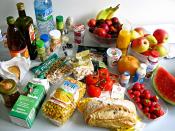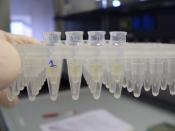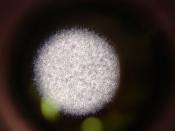This presentation will include what biological hazards exist in the workplace, legislation for industries involving this issue, and provide examples and prevention for employers in a variety of industries.
Firstly though I will take you through what biological hazards are and will go into a little detail of ones that we come into contact with everyday.
Biological hazards are living things, or substances produced by living things, that can cause illness, disease or worst-case death in humans. These agents, as funny as it sounds, do have many uses in the workplace, but most of them are quite harmful and include bacteria, viruses, and fungi as well as larger organisms such as parasites and plants.
These hazards can be found in both raw and processed products. They're living microorganisms (microbes) that are too small to see with the naked eye and live everywhere in our environment.
Microbes are classified into various groups.
Some cause illness, while others spoil food. Others can even be beneficial in a number of foods. Certain types of bacteria, yeast and molds actually grow in food and can produce chemicals or by-products that give particular foods favorable characteristics. Having said this, other microbes can cause spoilage, as their by-products tend to cause food to look, taste, and smell bad. Spoilage is undesirable but is normally not associated with safety.
Let's just take a quick look at some of the microbes that are considered beneficial. These are ones that produce desirable properties and components in foods. These comprise of bacteria and fungi, which can be either yeast or moulds. Certain yeast, moulds and bacteria are used to make foods that we eat everyday including beer, bread, wine, cheese, yogurt, soy sauce and salami. These foods couldn't be made without introducing certain types of microbes that produce the side-effect...


